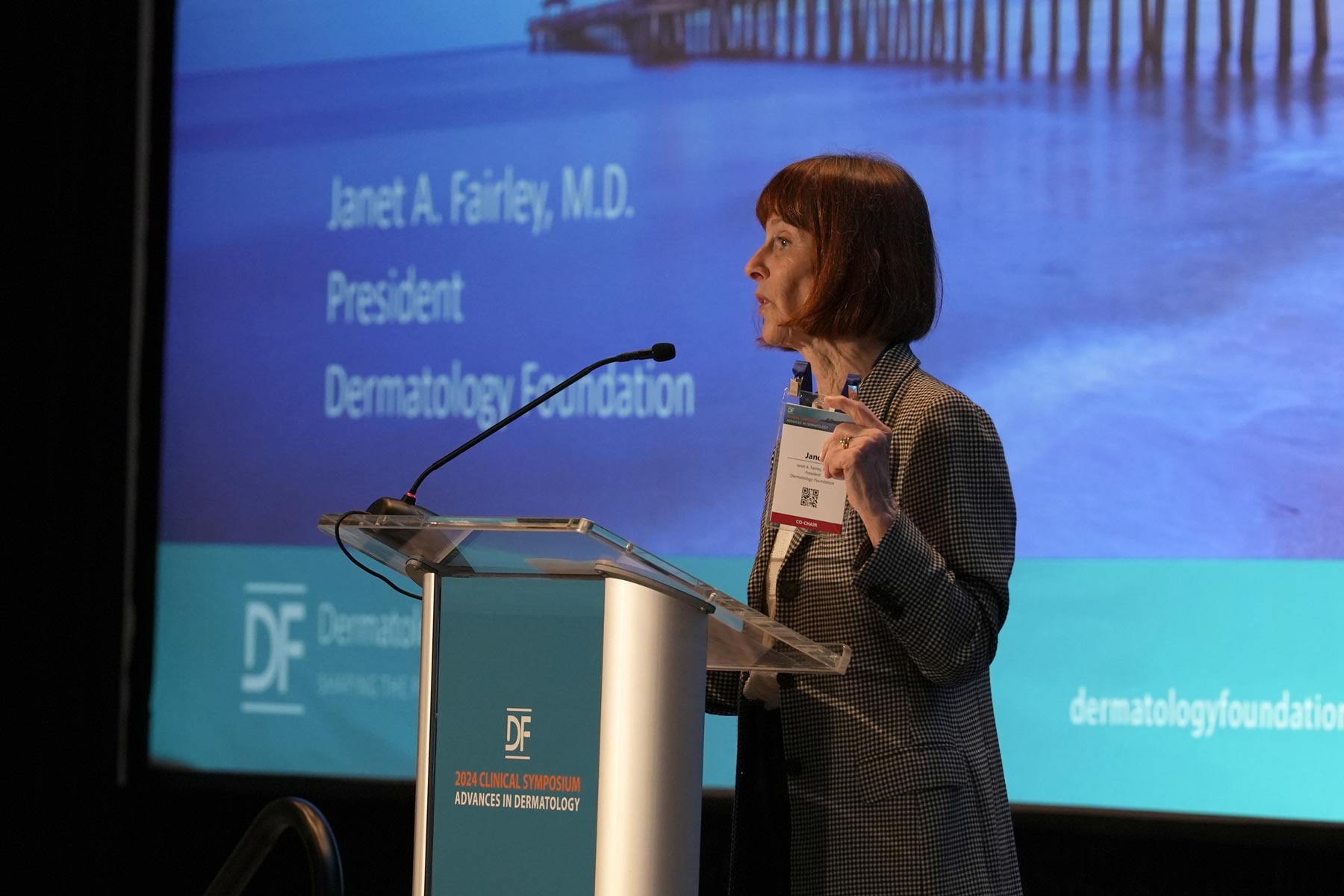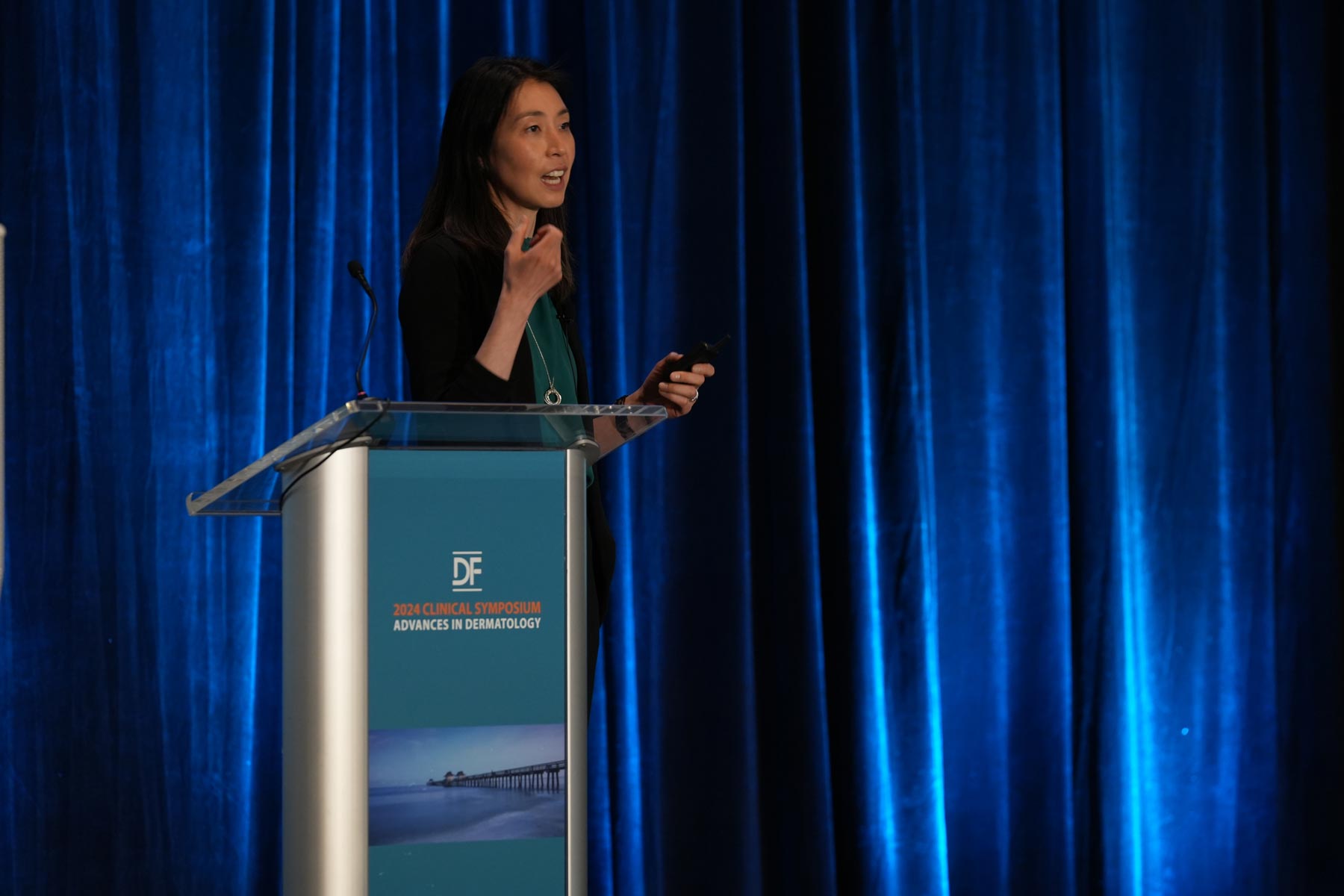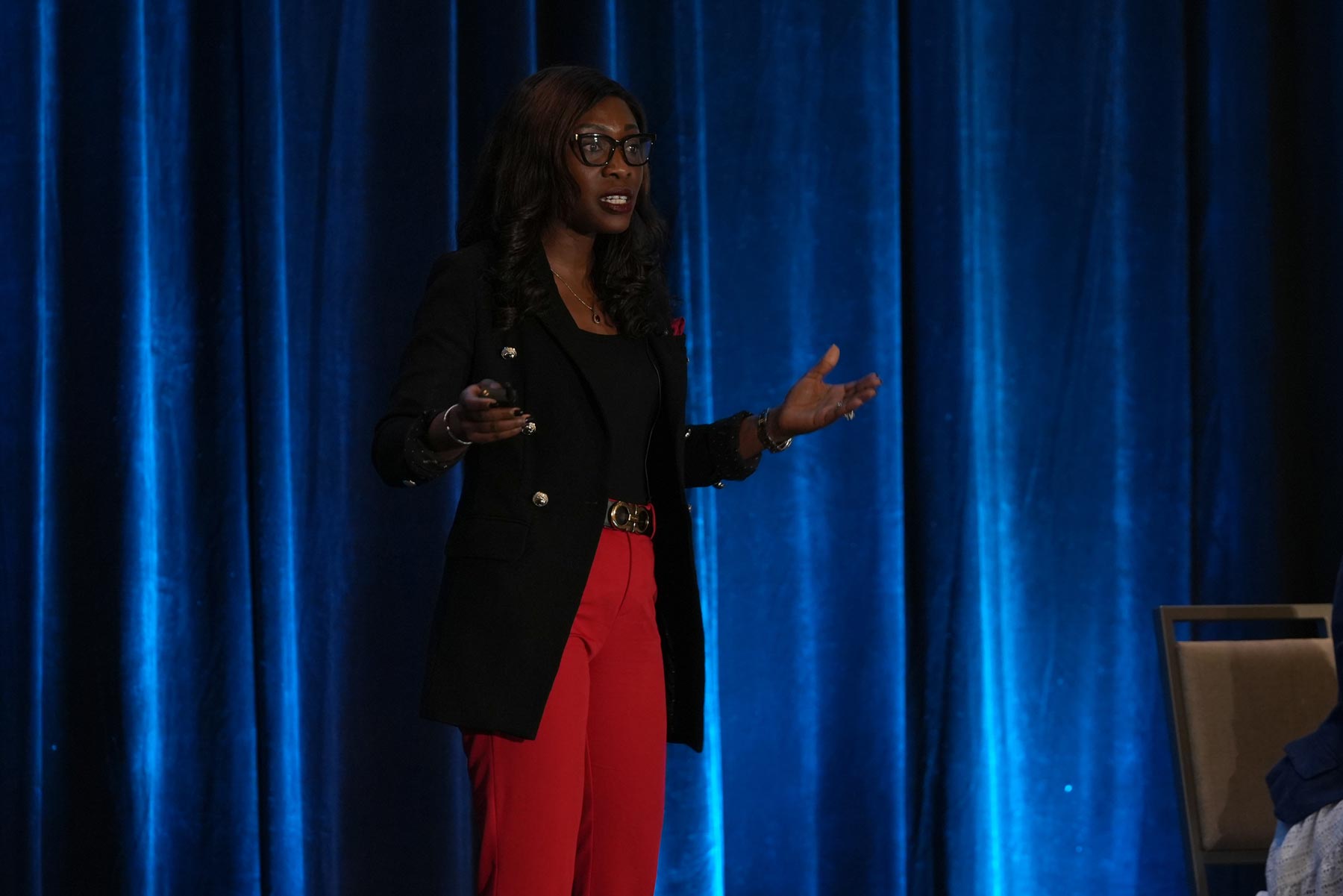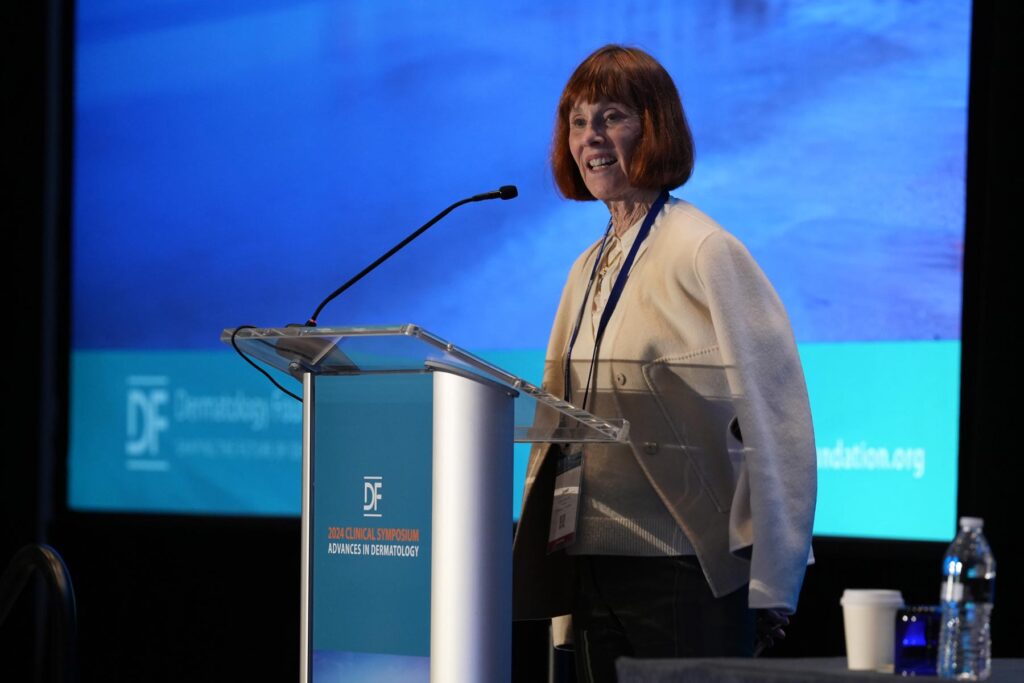The 21st DF Clinical Symposium was held at The Ritz-Carlton in Naples, Florida, from January 25–27.
- January 25–27, 2024
- The Ritz-Carlton in Naples, Florida
- Six mini-symposia, 21 in-depth talks, 11 speakers
More than 400 attendees gathered at the 21st annual DF Clinical Symposium (Symposium) to show their enthusiastic support of the Dermatology Foundation (DF). The sold-out symposium represents DF’s tradition of excellence in medical education and provides physicians with the most authoritative and current information on dermatologic diseases and issues.
“I have absolutely loved this meeting and now understand why many people say it’s their favorite meeting of all. Incredibly high-yield lectures from experts in their fields, no industry presence, free time each afternoon, and an amazingly beautiful venue with perfect weather,” said Dr. Jennifer Choi, describing her experience at the Symposium.
Welcome reception
Plenary sessions
Over three days, faculty members delivered 21 talks in one of six mini-symposia: Expanding the Treatment Toolbox, More Than Skin Deep, Bringing You Up to Date, Case Conundrums, State-of-the-Art Medicine, and Avoiding Pitfalls.
All talks will be summarized in the summer issue of Dermatology Focus. In this issue we highlight three talks from Drs. Jennifer Choi, Olayemi Sokumbi, and Lindy Fox.
Symposium Co-Chairs Drs. Janet A. Fairley, Yvonne E. Chiu, and Jack S. Resneck, Jr. developed the program schedule.

DF President Dr. Janet Fairley speaking to Clinical Symposium attendees.
In her opening address, President Janet Fairley, MD, welcomed a full house to the 21st annual Clinical Symposium.
She shared highlights of 2023 and described it as a year of renewed dermatologist energy. She gratefully acknowledged the contributions the DF has received to support investigators and continue investment in patient care. She highlighted two additional DF Mid-Career Research awards made possible by the $1-million grants from Bristol Myers Squibb, and Sanofi and Regeneron.
Dr. Fairley concluded her address by saying the Foundation’s 60th anniversary, with celebrations taking place throughout 2024 will celebrate investigators, patients, and its many supporters. “As we begin the year of our 60th anniversary I encourage you to join me and support a Foundation that has so generously nurtured us all.”
Faculty members
Featured talks

Cutaneous Metastases in Cancer Patients
Cutaneous metastases are, unfortunately, a common manifestation of numerous malignancies, including melanoma, breast cancer, lung cancer, and colon cancer. The dermatologist’s role is typically considered to be one of diagnosis, in both recognition and histopathologic confirmation of the metastasis. However, while systemic therapy is designed to ideally treat the cutaneous metastases, it is often ineffective. Dermatologists can help to manage cutaneous metastases through various modalities, including intralesional and topical therapies, and by doing so, provide palliative care, improve quality of life, decrease burden of disease, and even prolong survival.

Skin Color in Clinicopathologic Correlation: Does Color Matter?
Skin of color (SoC) remains an under-studied and under-taught area of dermatology despite its rising importance. Skin pigmentation can affect the manifestation and presentation of many common dermatoses. Dermatopathology may play a role in addressing knowledge of cutaneous disease in patients with SoC. Inherent clinical bias in the care of SoC patients may affect accurate dermatopathology sign out. Histopathologic diagnostic traps that may occur when our clinical gap in recognizing dermatologic disease in patients with SoC remains unaddressed. In the broad differential diagnosis of hypopigmentation and hyperpigmentation in Black patients, entities in this differential diagnosis may be misdiagnosed when they have subtle histopathologic findings. The combination of not recognizing dermatomyositis in Black patients and the often-subtle histopathology may result in the perfect storm of misdiagnosis of this important paraneoplastic disease.

Dermatological Emergencies: SJS:TEN Mimics
This session began with a dramatic presentation of toxic erythema of chemotherapy and follows several patients’ course from onset to treatment. In the process of working through the decision-making points, the differential diagnosis of patients presenting with the rapid onset of cutaneous skin necrosis was discussed in detail. There is a focus on cutaneous drug eruptions (TEN, linear IGA, acute generalized exanthematous dermatosis), toxic erythema of chemotherapy, and graft versus host disease and how they may mimic and be differentiated from each other. Finally, a literature review of the treatment for severe toxic erythema of chemotherapy concluded the session.
Meetings of the minds
The Open-Mic Forum is a Symposium tradition that attendees look forward to each year. Held at the end of days two and three, the Forum allows for an easy-flowing Q&A session with program faculty.
Dr. Janet Fairley led the closing mini-symposia, a Clinicopathologic Correlation panel discussion with Drs. Lindy Fox, Olayemi Sokumbi and Carrie Coughlin.
Closing reception
Invest in your CME and register this September for the DF 2025 Clinical Symposium!


